2017 IPM Online Conference
The 2017 IPM Online Conference, hosted by the Northeastern IPM Center (NEIPMC), featured updates from active projects funded by the Northeastern IPM Center’s Partnership Grants Program and from IPM-related projects funded through the Northeast Sustainable Agriculture Research and Education (NE SARE) Program and USDA-NIFA’s Applied Research and Development Program (ARDP) and Extension Implementation Program (EIP).
The rapid style conference featured 5-minute presentations in which the speakers discussed one or two highlights from their projects. The purpose of the conference was to increase collaboration and awareness about IPM-related research and extension in the Northeast.
Click on one of the video thumbnails below to launch the player, or watch the playlist on YouTube.
Give us your feedback — take a short survey about the IPM Online Conference so we can make improvements for next year.
Part 1
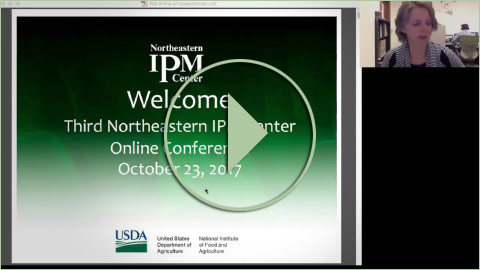
| Jana Hexter, Steve Young – Introduction |
| Changlu Wang (NEIPMC) – Reducing pest infestations and insecticide residues in low income housing – Rutgers University |
| Charles Lubelczyk (NEIPMC) – Manipulation of winter soil conditions as an IPM tool for blacklegged tick – Maine Medical Center |
| Quan Zeng (NEIPMC) – Evaluation of organic management options for fire blight in Connecticut – Connecticut Agricultural Experiment Station |
| Peter Jentsch (NESARE) – A behaviorally based approach to managing the invasive brown marmorated stink bug – Cornell University |
| Q&A Discussion |
Part 2
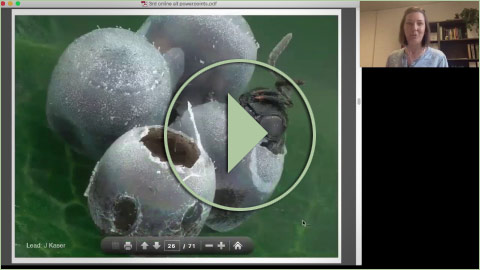
| Cesar Rodriguez-Saona (ARDP) – Managing an invasive drosophilid species in agriculture using innovative behavioral manipulation strategies – Rutgers University |
| Anne Nielsen (ARDP) – IPM-CPR: Using border sprays for brown marmorated stink bug in fruit – Rutgers University |
| Kathy Murray (NEIPMC) – Engaging school nurses to promote school IPM – Maine Department of Agriculture, Conservation, and Forestry |
| Adrienne Gorny (NESARE) – Susceptibility of potato varieties grown in New York to root-knot nematode (Meloidogyne hapla) – NYSAES, Cornell University |
| Q&A Discussion |
Part 3
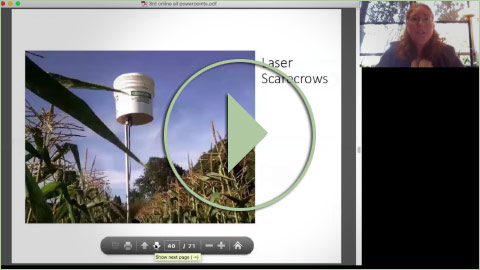
| Aditi Dubey (NESARE) – Evaluations of economic benefits and long-term sustainability of neonicotinoid seed treatment use in the mid-Atlantic – University of Maryland |
| Rebecca Brown (NESARE) – Laser scarecrows for preventing bird damage in sweet corn – University of Rhode Island |
| Martha Mutschler-Chu (NESARE) – Combining resistances to major bacterial, fungal, and oomycete diseases of Northeast-adapted tomato – Cornell University |
| Jennifer Hashley (NEIPMC) – Working with small-scale producers on IPM strategies: lessons from urban agriculture, small ruminants, and diverse producers perspectives on cultural controls – Third Sector New England |
| Q&A Discussion |
Part 4
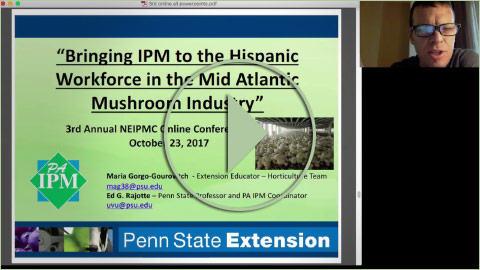
| Darcy Telenko (NESARE, NYFVI) – Evaluation of novel bird repellents in vegetable crops – CCE Cornell Vegetable Program |
| Maria Gorgo-Gourovitch (NEIPMC) – Bringing IPM to the Hispanic workforce in the mid-Atlantic mushroom industry – PA IPM Program, Penn State |
| Extended Q&A Discussion |
Part 5
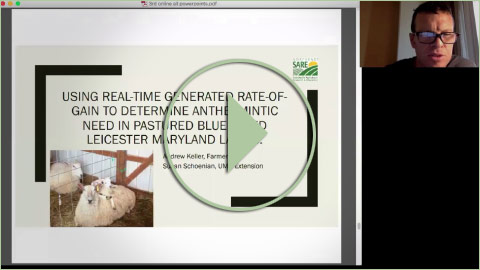
| Donna Ellis (CPPM-EIP) – What’s new with IPM in Connecticut? – University of Connecticut |
| Olivia Saunders (NESARE) – Weed control in low-input or organically grown wild lowbush blueberries – University of New Hampshire |
| Andrew Keller (NESARE) – Using rate-of-gain to determine anthelmintic need in Blue Faced Leicester lambs – Vista View Farms, Maryland |
| Mary Barbercheck (NEIPMC) – Going underground: conserving insect-pathogenic fungi for biological control – Penn State |
| Q&A Discussion |

